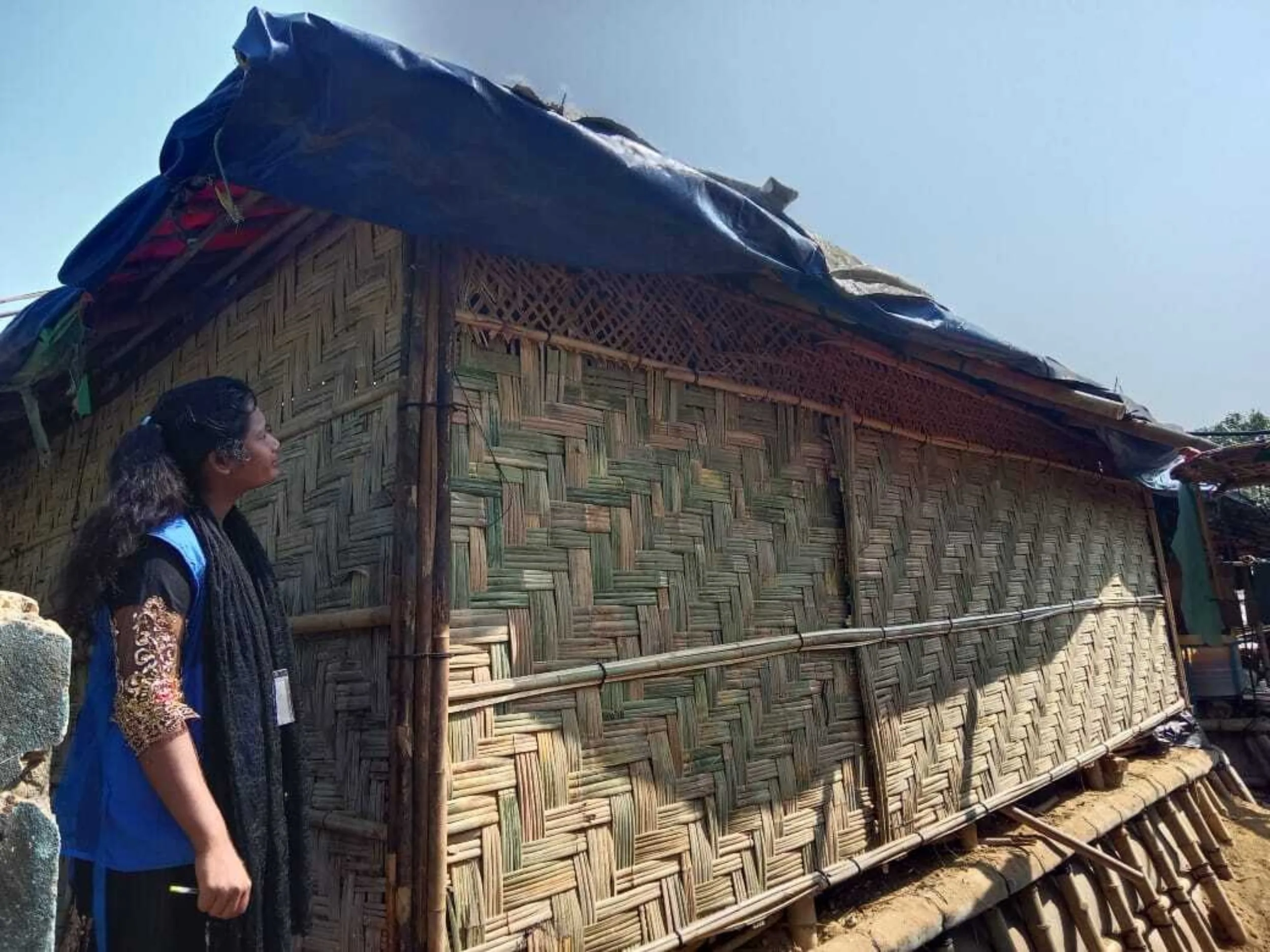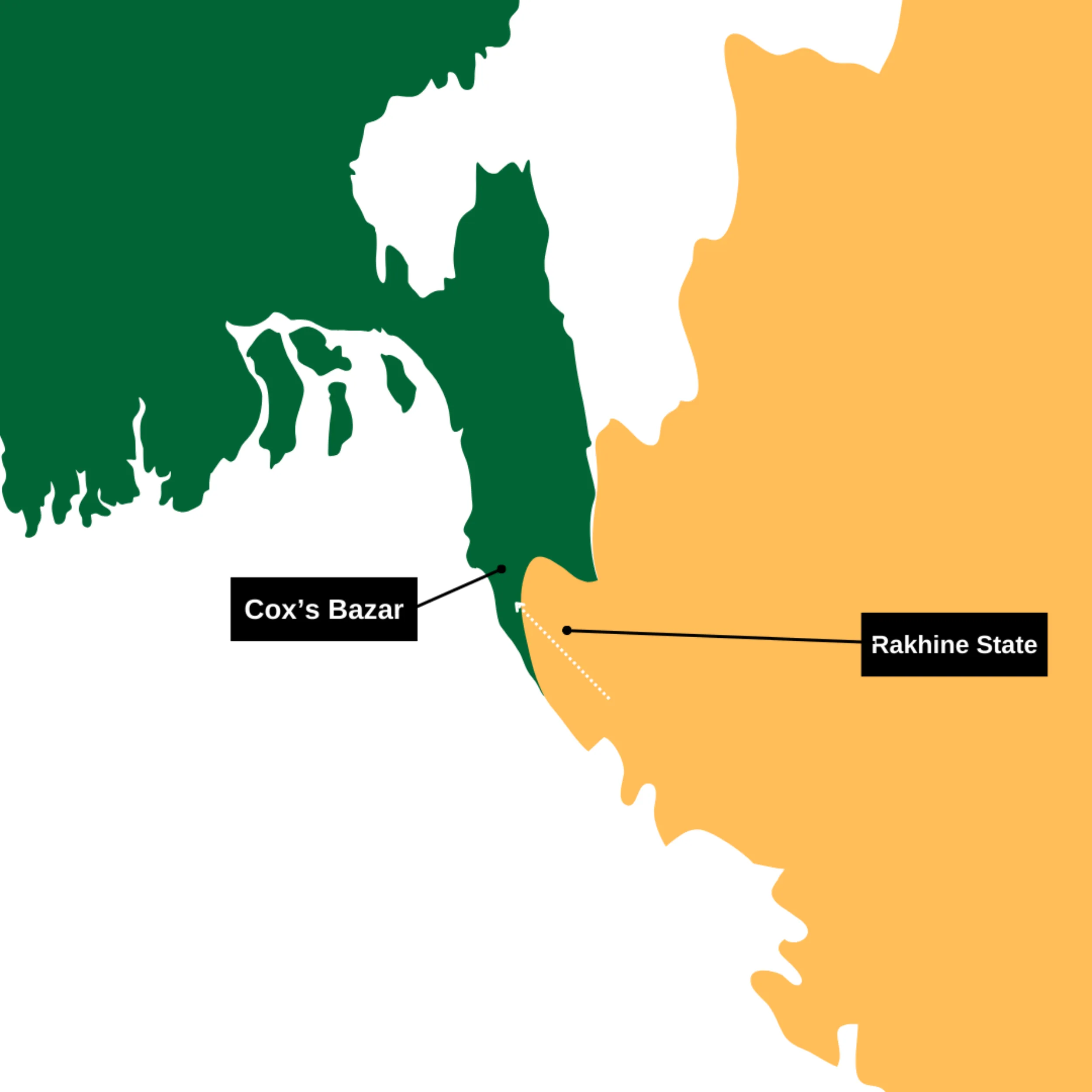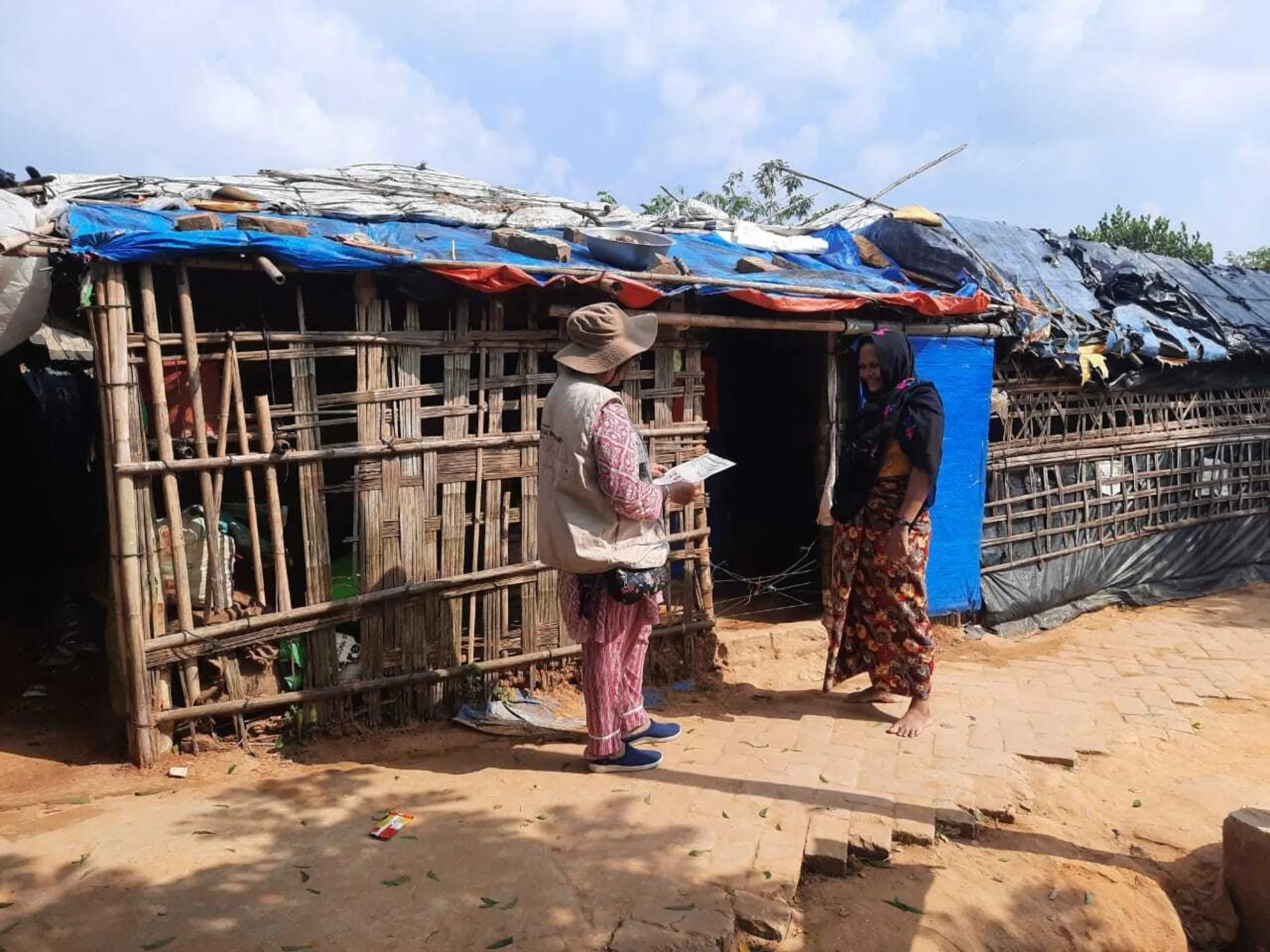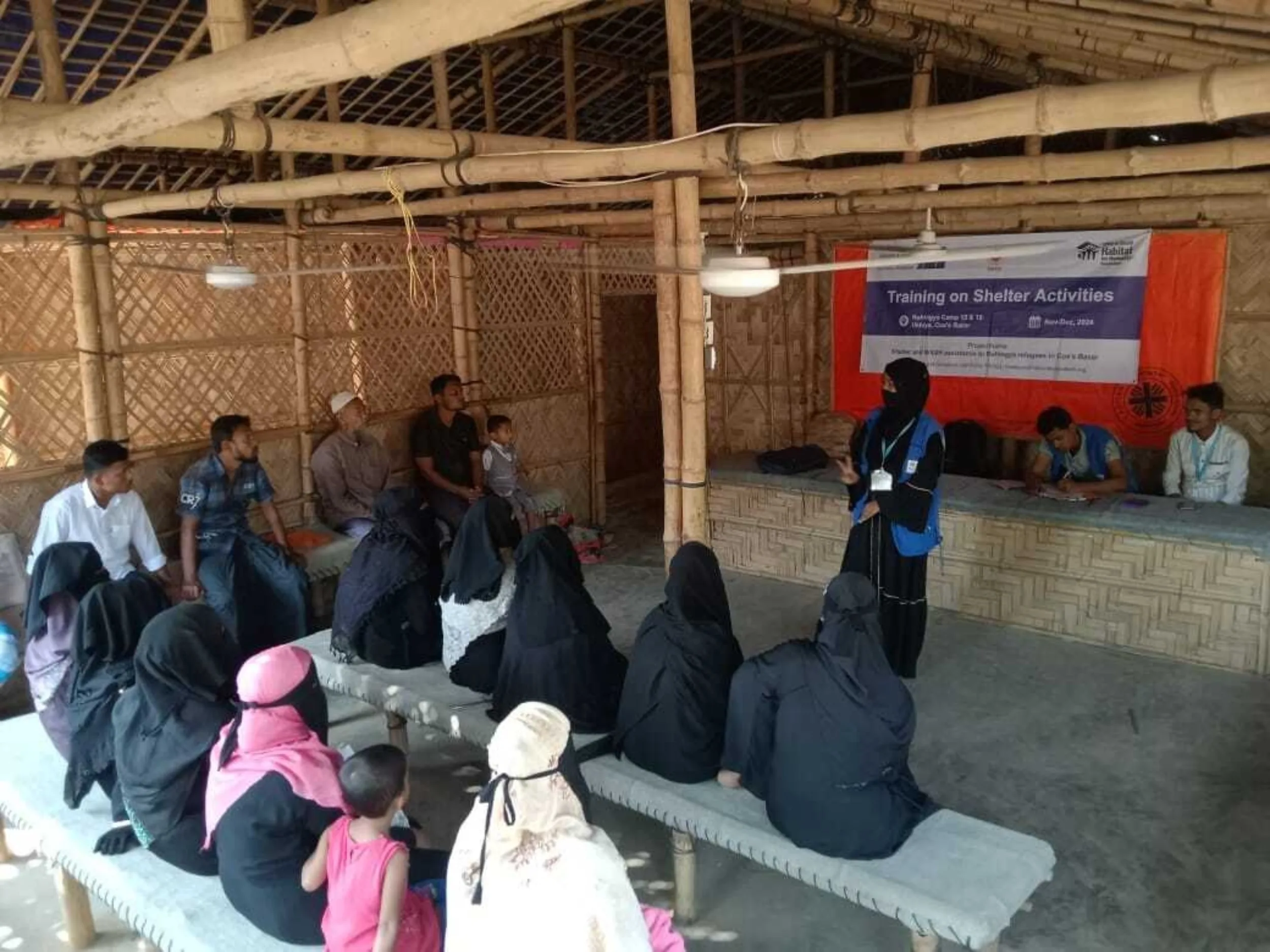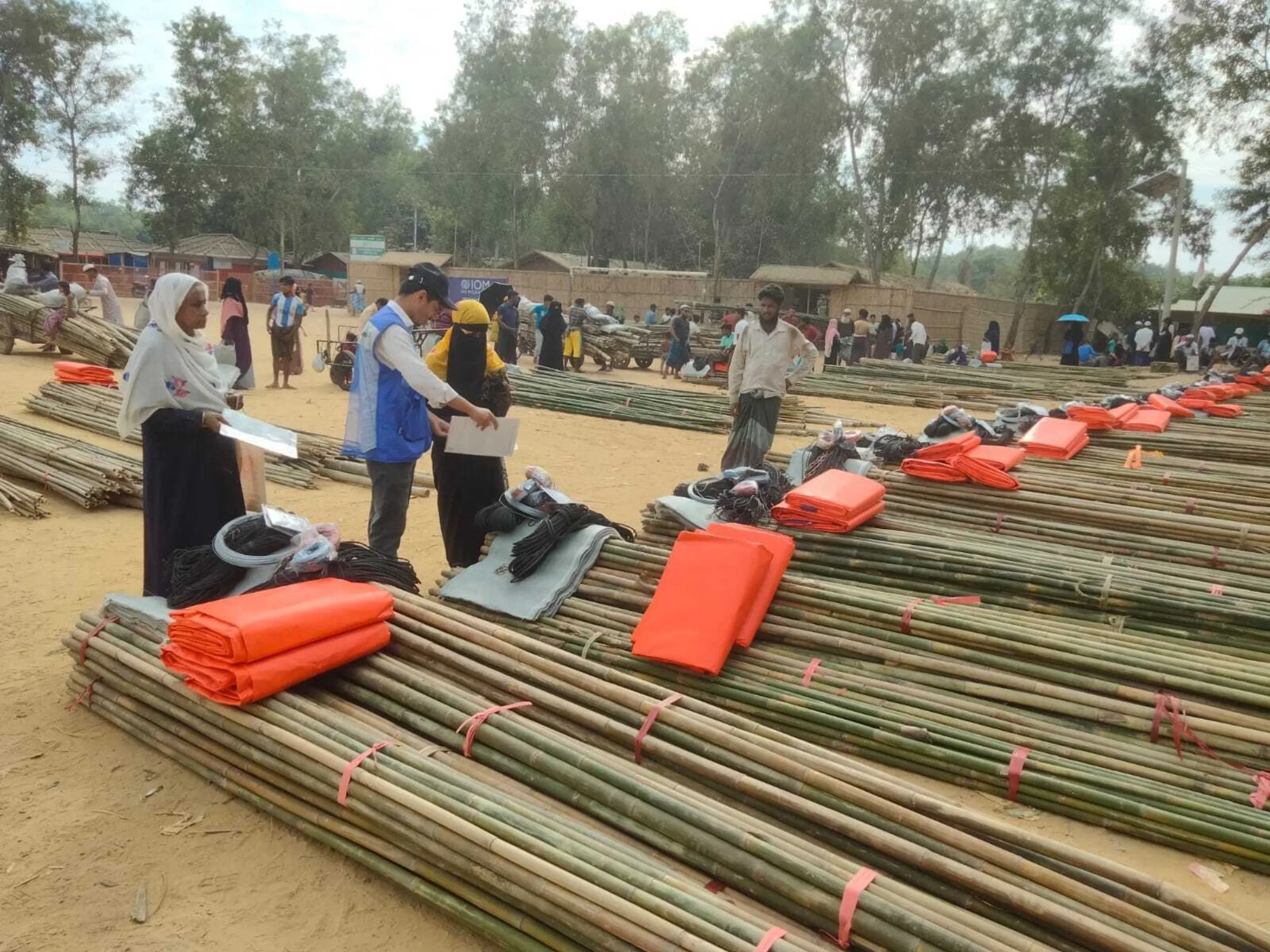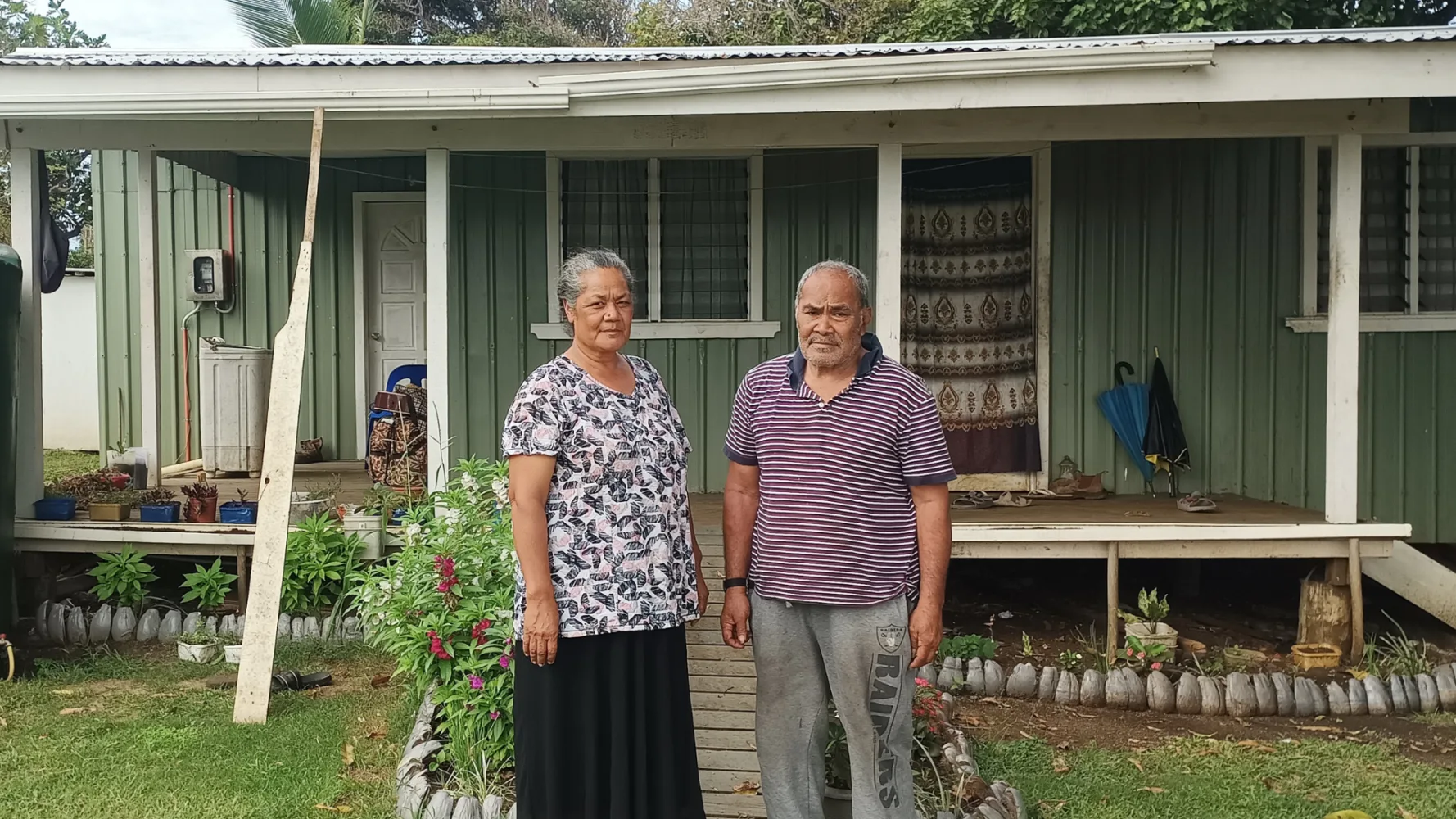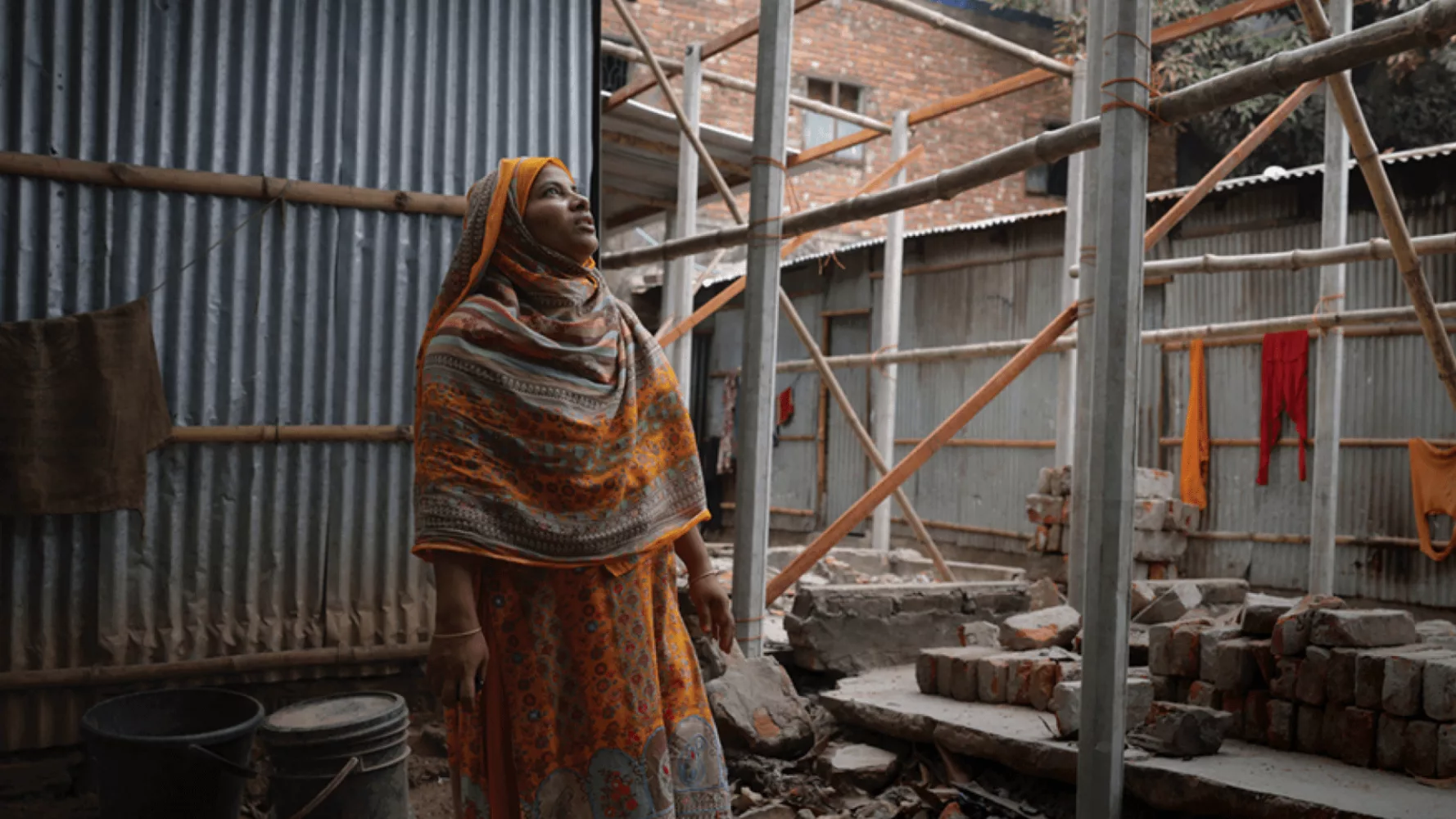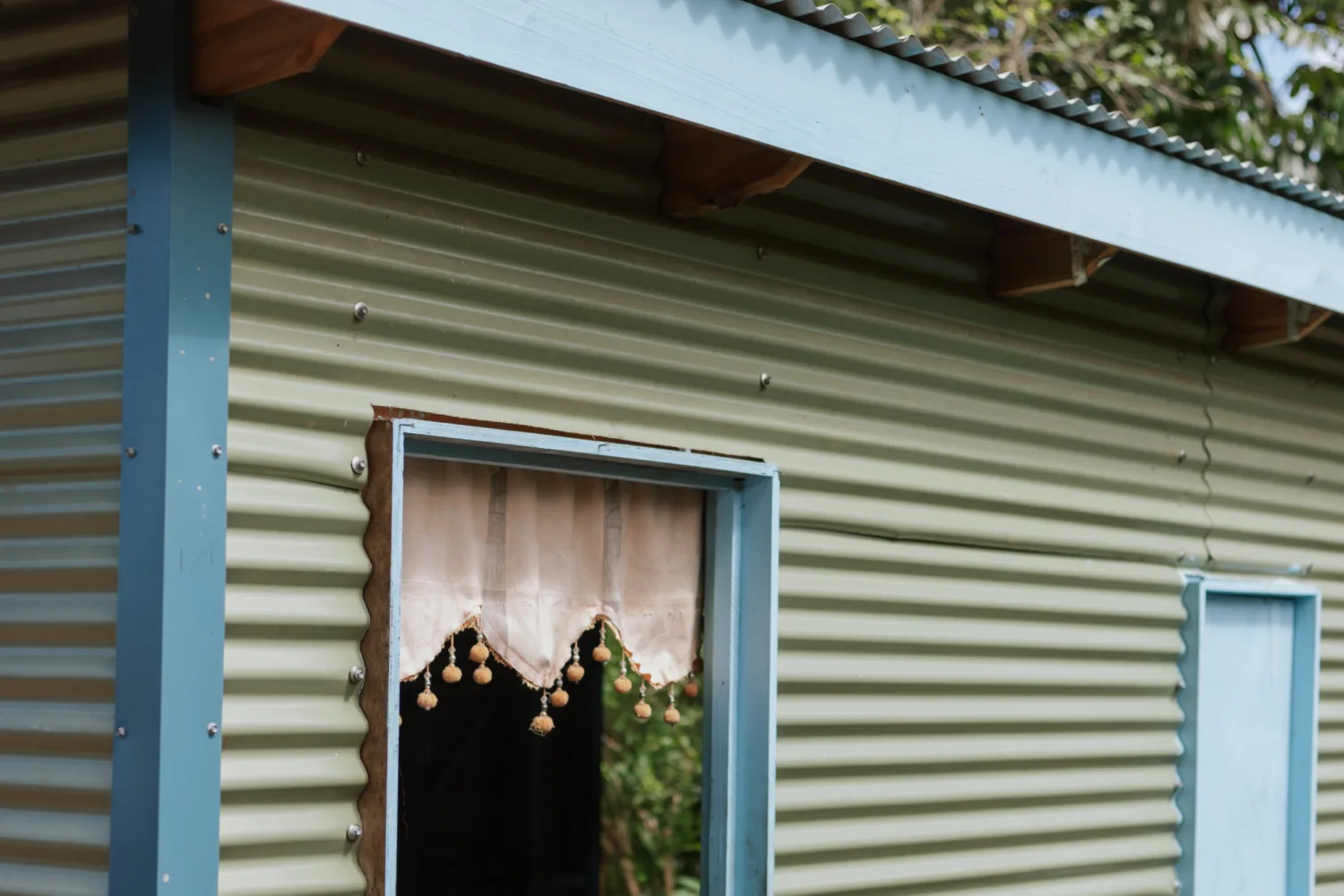The Rohingya people have endured decades of persecution and violence, culminating in a brutal military crackdown in 2017. Forced to flee their homes, nearly a million Rohingya sought refuge in Bangladesh, where they now live in sprawling camps in Cox’s Bazar. In 2025, life in the Rohingya camps remains challenging, with refugees facing overcrowding, inadequate shelter, and limited access to clean water and sanitation.
In response to this ongoing crisis, Habitat for Humanity is working in Rohingya camps to address critical needs for shelter and Water, Sanitation, and Hygiene (WASH) facilities.
These efforts aim to improve living conditions while empowering communities with tools and knowledge to maintain safer, healthier environments in the future.
Rohingya refugees are living in 33 camps in Cox’s Bazar on the coast of Bangladesh, which together make up the world’s largest refugee settlement.
Complicated geopolitical circumstances are leaving people in camps for years and the reality of living in indecent homes is serious; as recently as December 2023, it was reported that 73% of households in Camps 13, 19, and 8E were living with shelters ranging from “degrading living conditions” to “total collapse of living standards, with potentially immediately life threatening outcomes”.
Habitat for Humanity is working to address inadequate shelter in three Rohingya refugee camps in Cox’s Bazar, including Camp 13, the second most populated camp in Cox’s Bazar with a population of just over 46,800.
For families living here, they face harsh conditions such as overcrowding, harsh weather, and limited access to basic necessities. Many of the shelters are damaged, leaving families exposed to the threat of monsoon season, landslides, heavy rain, and fire outbreaks.
Since mid-2024, Habitat has repaired 300 shelters and restored 200 tubewells (a source of drinking water) and sanitation facilities—lifelines for clean water and hygiene. In some camps, anywhere from five to nine households can share one latrine, meaning repairs to one sanitation facility can improve the living conditions of many people.
Repairs include fixing critical roof leaks, reinforcing walls, and adding bracing to protect against extreme weather. The assessments also identify high priority groups to support first, such as women-headed homes and people living with a disability, who often face additional challenges in maintaining safe homes for their families.
The programme also goes beyond patching up structures; shelter material bundles are being distributed, and refugees are learning how to maintain their homes through group training sessions. Hygiene training takes place after upgrading facilities, equipping families with knowledge to maintain clean and healthy environments. Local workers are also being trained, ensuring these skills stay within the community.
For the families in Camps 13, 19, and 8E, these changes mean more than just better shelters—they mean safer nights, healthier days, and a chance to focus on the future.
If you wish to make a donation via credit card over the phone, please phone us on (09) 579 4111
You can donate via internet banking:
Habitat for Humanity New Zealand
ANZ
06-0177-0127197-00
If you wish your donation to go to a specific appeal please include in the payment Reference
If you make a donation on our website your receipt will be emailed to you automatically.
If you choose to donate via internet banking, you will receive your receipt via email 1-2 days after you make your donation. If no email address is given, your receipt will be posted to the address given.
Donations over $5.00 are tax deductible. You can submit your receipt to IRD website, and they will process your tax rebate.
Habitat for Humanity New Zealand has partnered with Supergenerous making it easier for your generosity to support our mission.
All your charitable donations are tax deductible. By claiming your end-of-year tax credit and gifting it back to Habitat, you’re making your original donation to us go even further.
Supergenerous is authorised by the IRD to claim your tax credit on your behalf, and donate back to your chosen charity.
Yes, you can give regular monthly donations to your chose Habitat for Humanity appeal. Just select 'give monthly' when processing your donation payment.
You can change, cancel or suspend your monthly donation at any time. Please email us at info@habitat.org.nz, or phone us on (09) 579 4111.
Your credit card will be charged once you submit your first monthly gift, and future donations will be made on that same day going forward. If you wish to change your payment date to better suit your pay cycle, please get in touch via information@habitat.org.nz, or phone us on (09) 579 4111 and we can easily action that for you.
Yes, you will receive an annual tax receipt at the close of the financial year, recording all donations.
Yes, if you wish to donate via internet banking, our details are
Habitat for Humanity New Zealand
ANZ
06-0177-0127197-00
If you wish your donation to go to a specific appeal, please enter into your Reference
One tax receipt recording all your donations for the financial year, making it easy to claim your tax rebate.
With small payments spread out month to month, becoming a HopeBuilder can suit any budget. Even a small amount can have a huge impact.
Your donation occurs automatically each month, and you can pause, downgrade, upgrade, or cancel at any time.
Your regular support ensures long-term impact, all year long.
Please fill in the below enquiry form and we will be in touch soon.
Please fill in the below enquiry form with your details and we will be in touch within 2 working days.
